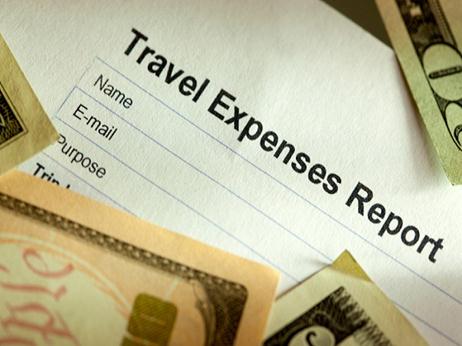Taxes
Rely on New Per Diem Rates
The government annually establishes a flat rate for certain “high-cost areas” such as New York, Chicago and Los Angeles and other major cities.
Dec. 27, 2022

The IRS often scrutinizes deductions for business travel expenses incurred by employees. Unfortunately, it’s a hassle keeping all the detailed records required by IRS regulations. However, your business may be able to take advantage of recordkeeping shortcut.
Specifically, you may rely on the “per diem rates” established for use by government employees. The IRS says your for-profit business can use the same rates as those for its employees with just one catch: A business owner-employee can’t use the rates if they own 10% or more of the company. But all other employees are good to go.
The rates are updated on an annual basis. The IRS recently issued the new rates for its 2023 fiscal year (FY2023), which spans October 1, 2022 through September 30, 2023 (more on this later). So the new rates are already in effect if your business wants to use them for travel late in calendar year 2022.
Background: If employees properly account for their business travel expenses, including the cost of meals and lodging, employer-paid reimbursements are tax-free to the employees and deductible by the company. The problem is that employees must keep extensive records backed by supporting documentation. With the per diem allowance, employees don’t have to keep receipts for all their travel expenses. The employer simply pays the approved amount.
In fact, employees aren’t even required to report the payments on their tax return, although they still must substantiate the time, place and business purpose of their business travel.
Key point: The government annually establishes a flat rate for certain “high-cost areas” such as New York, Chicago and Los Angeles and other major cities. Other areas—for example, Vail, Colorado and Nantucket, Massachusetts—are treated as high-cost areas only on a seasonal basis. All other locations are treated as “low-cost areas.”
The rates generally move slightly year to year. Accordingly, the new per diem rate for high-cost areas in FY2023 has increased from $296 to $297. The per diem rate for all other areas (i.e., low-cost areas) for FY2023 is $204, up from $202 in 2022.
What’s more, as usual, the list of high-cost areas has been tweaked. The following areas have been added to the list of high-cost areas for FY2023: Gulf Shores; Alabama; Phoenix/Scottsdale, Arizona; San Luis Obispo, California; Durango and Steamboat Springs, Colorado; Bradenton, Cocoa Beach, Gulf Breeze, Panama City, Pensacola, Punta Gorda, Sarasota, Sebring and Stuart, Florida; Sun Valley/Ketchum, Idaho; Portland, Maine; Mackinac Island, Michigan; Duluth, Minnesota; Kalispell/Whitefish, Montana; Toms River, New Jersey; Glens Falls, New York; Kill Devil Hills, North Carolina; Lincoln City, Oregon; Myrtle Beach, South Carolina; Moab, Utah; Manchester, Vermont; and Port Angeles/Port Townsend, Washington.
On the other hand, Crested Butte/Gunnison, Colorado has been removed from the list of high-cost areas for FY2023.
Thee entire list of high-cost areas can be found at www.irs.gov/pub/irs-drop/n-22-44.pdf. Consult with your professional tax advisors to see if this technique makes sense for your company.
